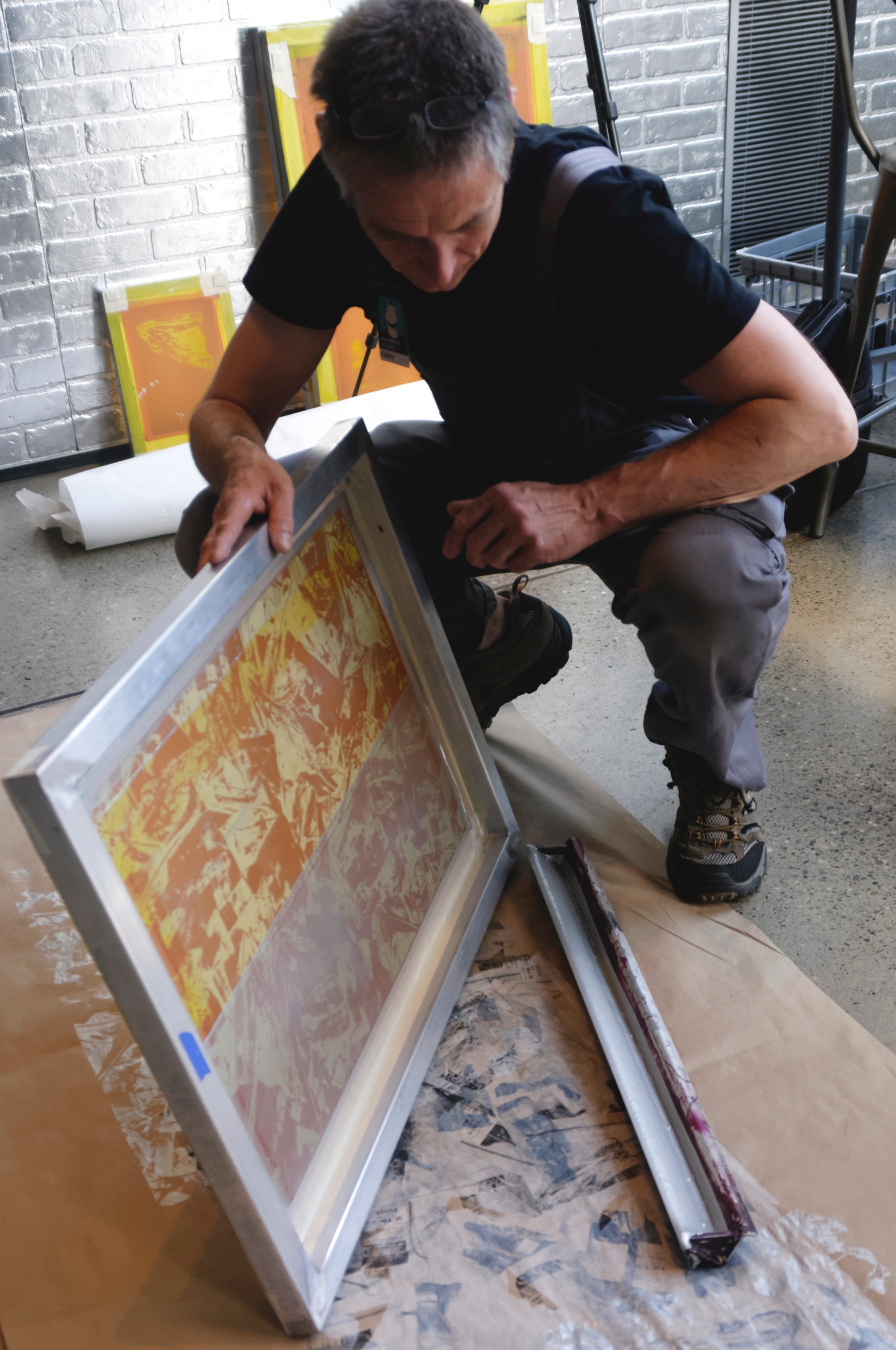behind the scenesInterview with visiting artist Stefan Hoffmann
Education Coordinator Stephanie Garrison sat down with German/Dutch visiting artist Stefan Hoffmann to talk about his site-specific work Glycerine and Rose Water, which he is installing in The Warhol entrance space. He talks about finding his source material in The Warhol’s archival collection and the challenges he faces working in different spaces.

Stephanie Garrison: The ideas for your installations begin with a response to the space, can you explain your initial process?
Stefan Hoffmann: Well, the initial process is pretty simple. I consciously try to avoid forming any ideas beforehand about what I am actually going to do because I am really looking for something that would make sense at the place I’m working. I’m always working in very public situations. These situations change very rapidly. The circumstances can be totally different. I have to work in an environment for a specific moment of time, and that’s when I’m developing it. It has to make sense for me, in the space. When I come to a place, I redefine the visual vocabulary I’m using. My first approach is to find the visual material that I would use in the project.
SG: To find the visual material, you spent some time in The Warhol’s archives collection. What did you find, and what did you ultimately choose to form the visual basis for this installation?
SH: At the moment I put my foot into the museum, I was thinking about Warhol’s Time Capsules, all the material, which the museum has available. Since I’m reacting to the visual material which surrounds me, coming into The Warhol would mean I would have to react to the visual universe of Andy Warhol, which is almost impossible to do. This universe is so strong and convincing that it wouldn’t make sense to position myself next to this giant in this direct and literal way, re-appropriating some of his imagery.
So, in the archive I could find a different angle on his personality and his life. It was a very special opportunity for me to have access to all the old material that was found in Warhol’s apartment when he died. This wasn’t Time Capsule material, but just the old toiletries he collected and kept. I was particularly struck by these bottles in all these little plastic bags. When I entered the archives and saw these old toiletries, I knew that was going to be my source material.
SG: Could you talk more about how you decided to use the bags as a stand-in for museum constructs?
SH: The most obvious reaction was to take the bottles out of the plastic bags, and photograph them separately, a little bit like Warhol would use the Campbell’s soup can. But then I thought, these bags are fascinating. What interested me was this gesture of conservation in a museum context. For me, the museum was visible in the fact that there is this bag surrounding the bottles. There was a lot of references, for me, to Silver Clouds, for instance. The archivist is usually a hidden person in a museum, yet their way of defining, describing, and classifying the objects is a crucial gesture in elevating “normal stuff” into something worthy of preserving, into a cultural object.
SG: Do you encounter challenges working in different spaces for each of your projects?
SH: Yes, I always encounter endless amounts of challenges, and all the challenges are always totally different. And I think this is the most fascinating part of me working so publicly. The circumstances are totally unpredictable. This is a very complex social environment where I have to try to function within a structure, which is already there. For me, there is never this neutral white cube, which is empty, and I’m just installing my “high art” ideas. I come into a living environment, so to speak, even the lobby where I’m working now goes on functioning as it functions normally.
This is the very specific nature of my process, which is challenging. I have to be very flexible. For instance, at The Warhol, you have tons of events, there are also lots of people I had to ask for permission to use all the materials. Everyone was extremely helpful though, I have to say. It is really an absolute pleasure to work here.
SG: Do you consider maneuvering through this living environment the biggest challenge you faced on this project?
SH: I think the biggest challenge was not in the space itself, in defining a project for this museum, it was Andy Warhol, himself; that is the biggest challenge. Because being a vertical silkscreen printer, he’s kind of the inventor of screen printing in the art context. Being someone who is appropriating screen printing, and using it very prominently, can very easily turn into simply illustrating Warhol. My challenge was, would I be able to come up with an artistic position, which would be a meaningful statement in this context.
Visitors are encouraged to engage with Hoffmann in The Warhol’s entrance space during his installation process. Hoffmann also worked with The Warhol’s summer camps to create a vertical silkscreen installation on the museum’s underground Conservation Lab windows. Rather than silkscreen images of items from the The Warhol’s archives, he worked with the kids to create and photograph their own keepsakes in plastic bags, which were then burned onto screens and printed on the windows.
Glycerine and Rose Water is on view through October 4, 2015.